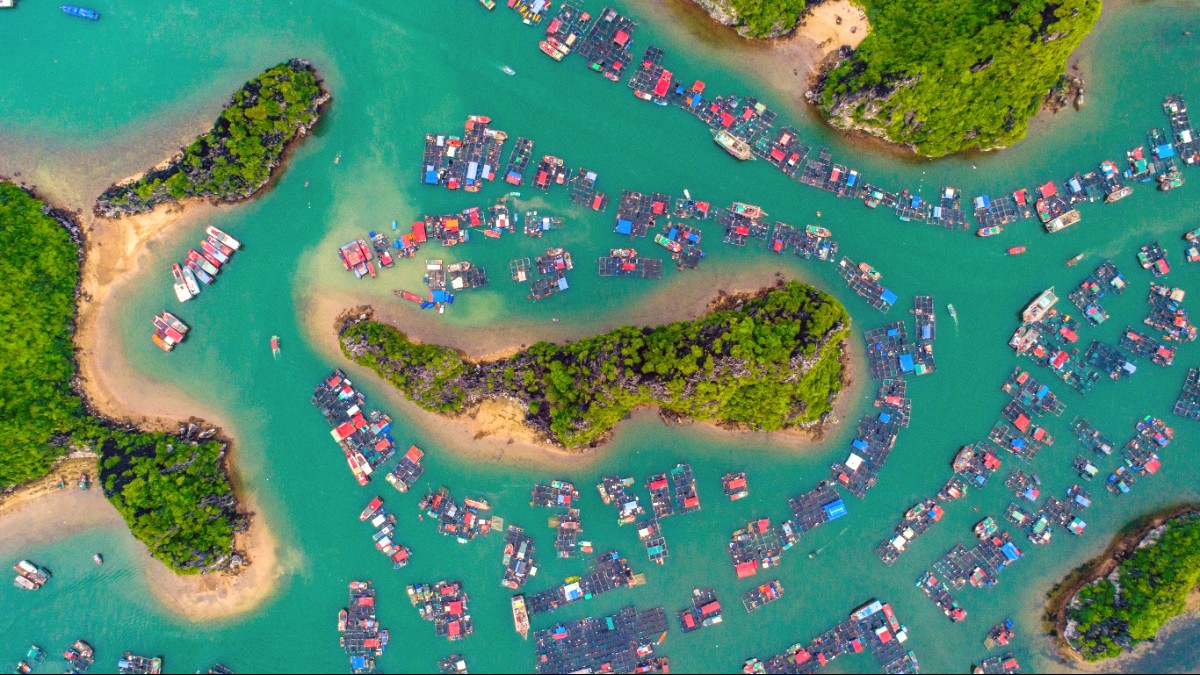
Northeast Vietnam, Vietnam
Warm and Wet Season (May to September): Temperatures range from 28°C to 35°C (82°F to 95°F). High humidity makes it feel warmer. Frequent heavy rainfall occurs, especially from July to September, with intense, short downpours.
Cool and Dry Season (October to April): Temperatures range from 18°C to 25°C (64°F to 77°F). Lower humidity makes the air comfortable. Less rainfall with many sunny days.
October to November & March to April: Pleasant temperatures, sunny skies, low humidity. Good for outdoor activities. Bay views are clear. Crowds are present but manageable.
July to August: Peak for domestic tourism. Expect crowded conditions, higher prices for accommodation and tours. Many Vietnamese families visit during school holidays.
Mainly July to September
Strong winds, heavy rainfall, localized flooding. Disruptions to ferry services and bay tours often occur.
Monitor weather forecasts closely during these months. Cancellations are possible.
January and February
Significant fog possible. Obscured bay views may result. Boat travel delays can happen.
Consider avoiding these months if clear views of limestone karsts are a priority.
May to June and December to February
Weather warms, humidity and rainfall increase. Water is warm for activities.
Cooler temperatures. Fewer tourists, potentially lower prices. Water activities may be chilly.
These months are often described as having the best weather. Temperatures are pleasant, skies are frequently sunny, and humidity is low. Conditions are suitable for outdoor activities like hiking and kayaking. Views of the bay are generally clear. Crowds are present but can be managed.
This period marks the peak for domestic tourism. Expect crowded conditions, especially on weekends and public holidays. Accommodation and tour prices are higher. Despite being hot and humid with a risk of typhoons, many Vietnamese families visit during school holidays.
For July or August trips, booking accommodations and tours well in advance is recommended. Popular options sell out.
Check weather forecasts before and during your trip, especially during the rainy season.
Local tour operators have current information on bay conditions.
July to September (excluding domestic peak) is the hottest and wettest. Fewer crowds, potentially lower prices, but weather may limit activities.
Be flexible with plans during adverse weather periods.
Review these requirements before your departure for a smooth entry.
Vietnam offers several visa options based on nationality and stay duration.
Have these documents ready for visa applications and entry.
Vietnam is generally affordable, but costs vary based on your travel style.
Costs are approximate and may change.
Tipping is not mandatory or widely expected in Vietnam, especially in local eateries or for basic services. It is appreciated for good service in higher-end settings.
Your well-being on Cat Ba Island is a priority. Prepare for common health concerns and understand safety measures before you travel.
Traveler's Diarrhea: A frequent issue due to contaminated food or water.
Mosquito-borne Illnesses: Dengue fever is present in Vietnam. Heatstroke/Dehydration: Common in hot and humid conditions. Sunburn: The tropical sun is strong.
No specific vaccinations are required for entry into Vietnam, unless you arrive from a country with a risk of Yellow Fever transmission.
Consult a travel health professional 4-6 weeks before your trip.
Routine, Hepatitis A/B, Typhoid, Rabies, Japanese Encephalitis are often recommended.
Cat Ba General Hospital provides basic medical services. For serious issues, seeking care in better-equipped hospitals in Hai Phong or Hanoi is a wise choice.
Larger city hospitals often offer international-standard care and English-speaking staff.
Pharmacies are available in Cat Ba Town for common medications.
Tap water is not safe for drinking on Cat Ba Island. Exercise caution with street food and local eateries.
Use bottled, boiled, or purified water. Consider a Portable water filter bottle.
Choose places with high customer turnover; avoid raw or undercooked seafood.
| Concern | Description | Prevention/Note |
|---|---|---|
| Petty Crime | Pickpocketing and bag snatching possible in crowded areas. | Stay aware of belongings; use Anti-theft bags. |
| Scams | Inflated prices or taxi scams. | Agree on price beforehand or confirm meter use. |
| Scooter Accidents | Common for inexperienced riders. | Always wear a Helmet. Confirm rental scooters are well-maintained. |